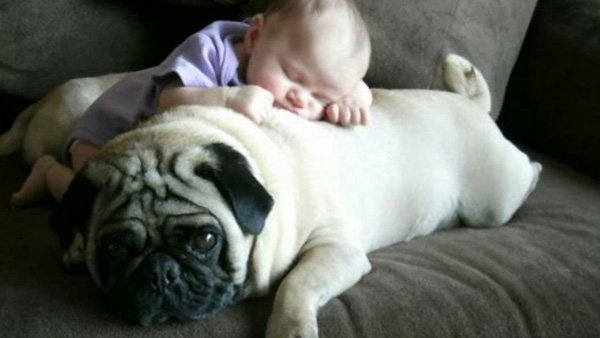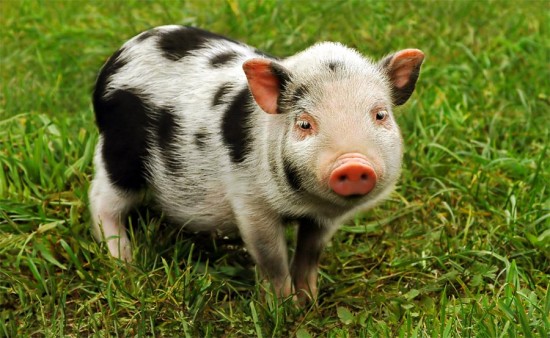

When male dogs are young, the testes descend down into the scrotum, outside of the body. Generally, this process will be fully completed by the time the dog is two months old, but occasionally later- up to four or six months is not considered abnormal.
However, if either one or both of the dog’s testes do not descend normally down into the scrotum but are instead retained within the body, this is known as cryptorchidism, which means a missing or incomplete descent of the testes. When this happens, the testes that should have descended are retained somewhere within the body of the dog; commonly within the inguinal canal, the passage that connects the testes to the spermatic cord. Generally, un-descended testes within the inguinal canal can be felt by physical palpation.
However, sometimes retained testes may be higher up within the body of the dog, deeper within the abdomen, which can make them harder to identify by either physical examination or x-ray. In this case, ultrasound examination may be needed to locate the missing testes.
When one of both of the testes do not descend properly, this can pose a range of problems. First of all it means that the dog will not be able to be castrated normally to neuter them, and also, it provides a greatly heightened risk of the development of testicular cancers in the dog in later life.
For this reason, cryptorchid testes are rarely left within the body, but are usually located and removed surgically.
Theoretically cryptorchidism can occur in any male dog of any breed, but it is certainly more common within some breeds than in others.
It is most commonly seen in toy and miniature dog breeds, but Staffordshire Bull Terriers, German Shepherds and Boxer dog breeds also seem to have more than their fair share of cryptorchid dogs than most other breeds.
Interestingly, it is usually the right testis that fails to descend rather than the left, with the right testicle being absent twice as often as the left in affected dogs.
Around 1.2 -3.3% of male dogs are cryptorchid, and the condition is much more common within purebred dog breeds than mixed breeds and mongrels. There is some evidence to suggest that there is a genetically inherited element to cryptorchidism, and that it is a recessive chromosomal trait.
It is usually fairly obvious if a dog is cryptorchid by the time that they are around six months old, as one of the testes will be missing, something that can be seen by visual observation. Generally, the condition is totally non-painful for the affected dog, however, in rare cases, the spermatic cord may twist and cut off the blood supply to the testes, leading to sudden onset severe abdominal pain.
Tumours of the un-descended testes are also ten times more common than tumours in properly descended testes, which can lead to a heightened production of the feminine oestrogen hormone, which can lead to feminized behaviour in the dog, and them becoming attractive to other un-neutered male dogs.
A physical examination by your vet once your dog is of age will allow the vet to discover whether or not there is an un-descended testicle present, and if the missing member is within the inguinal area, your vet can usually find this via physical examination too. However, if the missing testes cannot be located with ease, ultrasound examination is the most reliable method of definitively locating the missing testicle’s location within the body of the dog.
Generally, your vet will advise surgical castration of the dog, removing the descended testicle that is outside of the body in the normal fashion, and surgically locating and removing the cryptorchid testicle from its location within the body.
It is not considered to be viable or ethical to perform a surgery to bring the un-descended testicle down into the proper position and leave the dog un-neutered. While it is theoretically an option to simply leave the dog as they are and not seek out any treatment for the un-descended testicle, this is inadvisable for various reasons.
A dog with a retained testicle will still be capable of reproducing, and will be attracted to bitches in heat in just the same was as other un-neutered male dogs. With this, they will display all of the usual un-neutered male dog behaviours regarding dominance and the natural drive to breed.
As testicular cancer in the dog is over ten times more common in cryptorchid dogs than dogs with normal testes development, it is highly recommended to remove the retained testicle as soon as possible in order to prevent the development of testicular cancer in the dog later on in life.
 An introduction to pet micro chipping
An introduction to pet micro chipping
One litt
An introduction to pet micro chipping
An introduction to pet micro chipping
One litt
 Do Pigs Make Good Pets?
Do Pigs Make Good
Do Pigs Make Good Pets?
Do Pigs Make Good
 How To Find A Lost Pet
How To Find A Los
How To Find A Lost Pet
How To Find A Los
 Dealing With A Puppy That Destroys All Of Their Toys
Dealing With A Pu
Dealing With A Puppy That Destroys All Of Their Toys
Dealing With A Pu
 How Feeding Quality Treats Influence Dogs Health?
How Feeding Quality Treats Influence Dogs Health?
How Feeding Quality Treats Influence Dogs Health?
How Feeding Quality Treats Influence Dogs Health?
Copyright © 2005-2016 Pet Information All Rights Reserved
Contact us: www162date@outlook.com